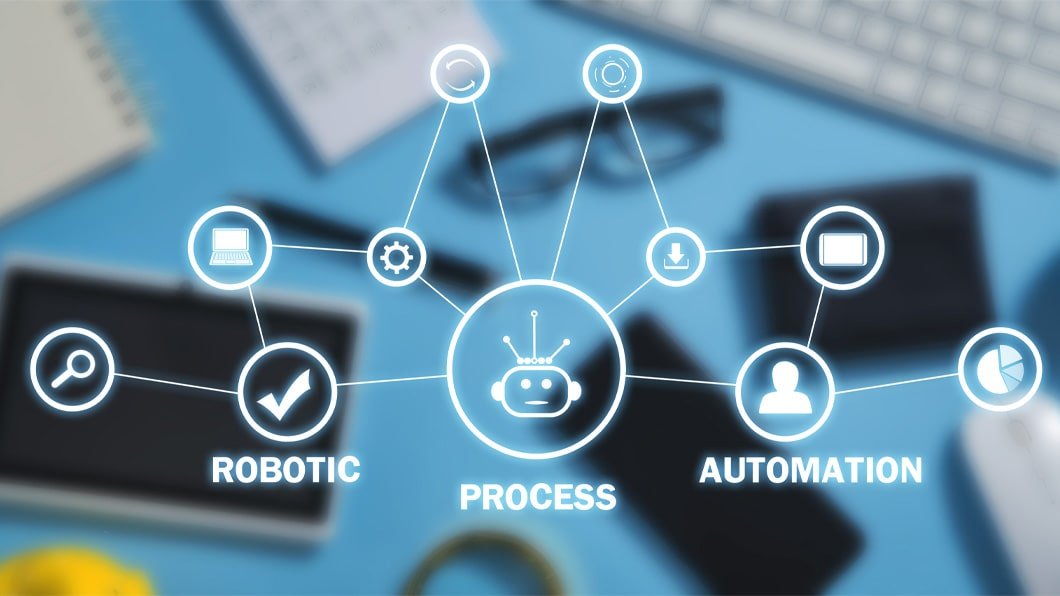
Revolutionizing Industries: Robotics and Automation
Introduction:
In the realm of technological advancements, few innovations have captured our imagination and transformed industries as profoundly as robotics and automation. From manufacturing and healthcare to agriculture and transportation, robotics and automation have emerged as catalysts for increased efficiency, improved safety, and enhanced productivity. This blog delves into the fascinating world of robotics and automation, exploring their applications, benefits, and potential impact on society.
What is Robotics?
At its core, robotics is the interdisciplinary field that combines engineering, computer science, and other scientific disciplines to design, develop, and deploy robots. A robot, in the context of robotics, is a machine programmed to perform tasks with varying degrees of autonomy. Robots can be physical entities that interact with the physical world or software-based agents that operate in virtual environments.
Applications of Robotics:

- Manufacturing: The manufacturing industry has witnessed a profound transformation with the integration of robotics and automation. Robots are now commonly found on assembly lines, performing repetitive tasks with precision and speed. They have enabled increased production rates, improved product quality, and reduced human error, thereby revolutionizing the manufacturing landscape.
- Healthcare: Robotics has found a crucial role in healthcare, assisting in surgeries, rehabilitation, and patient care. Surgical robots provide surgeons with enhanced precision and control, resulting in minimally invasive procedures and reduced recovery times. Additionally, robots can perform monotonous tasks such as medication delivery, patient monitoring, and physical assistance, allowing healthcare professionals to focus on critical care.
- Agriculture: The agriculture sector has embraced robotics to tackle labor shortages and optimize crop production. Robots equipped with sensors and cameras can autonomously navigate fields, identifying and treating pests, monitoring crop health, and efficiently harvesting crops. This integration of robotics and automation in agriculture promises increased yields, reduced resource usage, and more sustainable farming practices.
- Logistics and Transportation: Robotics and automation have revolutionized the logistics and transportation industry. Automated guided vehicles (AGVs) and drones are increasingly used for material handling, warehousing, and last-mile delivery. These technologies enable faster order fulfillment, improved supply chain management, and reduced transportation costs.
Benefits of Automation

- Increased Efficiency: Automation eliminates human errors, enhances precision, and accelerates processes. It enables the completion of tasks at a consistent pace without fatigue, significantly boosting overall productivity.
- Improved Safety: Robots excel at handling hazardous and repetitive tasks, ensuring the safety of human workers. By delegating dangerous operations to machines, the risk of accidents and injuries can be significantly reduced.
- Cost Savings: Although the initial investment in robotics and automation can be substantial, the long-term benefits outweigh the costs. Automation can reduce labor expenses, optimize resource utilization, minimize waste, and enhance operational efficiency, leading to substantial cost savings over time.
Enhanced Quality: Robots perform tasks with high precision and accuracy, resulting in improved product quality and consistency. By reducing human error and variability, automation leads to a higher level of quality control and customer satisfaction.
Societal Impact
While robotics and automation offer numerous benefits, their widespread implementation also raises questions about job displacement and societal implications. It is crucial to adapt to the changing landscape by equipping the workforce with new skills and creating opportunities for human-robot collaboration. By embracing the potential of robotics and automation, society can reap the rewards of increased productivity, economic growth, and a higher quality of life.
As robotics and automation continue to evolve, there is an increasing focus on human-robot collaboration. Rather than replacing jobs, the aim is to augment human capabilities and create new roles that leverage the strengths of both humans and robots. This collaborative approach emphasizes the importance of reskilling and upskilling the workforce to adapt to the changing demands of the modern workplace.
Furthermore, the integration of robotics and automation can lead to the creation of entirely new industries and job opportunities. As technology advances, there will be a growing need for skilled professionals in robotics engineering, programming, maintenance, and supervision. By embracing these emerging fields, individuals can position themselves for rewarding careers in the robotics industry.

Additionally, robotics and automation can have positive societal impacts beyond the realm of work. In healthcare, robots can support aging populations by providing assistance with daily tasks, monitoring vital signs, and offering companionship. In disaster scenarios, robots can be deployed to navigate hazardous environments and perform search and rescue operations, potentially saving lives.
Ethical considerations also come into play with the increasing autonomy of robots. As robots become more capable of decision-making and independent action, it becomes essential to establish guidelines and frameworks to ensure their responsible use. This includes addressing issues such as privacy, security, and accountability to prevent misuse or unintended consequences.
In conclusion, robotics and automation are reshaping industries and revolutionizing the way we work. With their ability to enhance efficiency, improve safety, and drive innovation, these technologies have the potential to unlock new possibilities and drive economic growth. It is crucial for businesses, governments, and society at large to embrace these advancements responsibly, taking into account the needs of the workforce and the ethical implications. By doing so, we can harness the full potential of robotics and automation to create a brighter and more prosperous future.

Furthermore, the integration of robotics and automation has the potential to address some of the pressing challenges faced by society. For instance, in the field of environmental sustainability, robots can play a crucial role in tasks such as waste management, pollution monitoring, and renewable energy production. By automating these processes, we can reduce our ecological footprint and work towards a more sustainable future.
Moreover, robotics and automation have the potential to enhance accessibility and inclusivity. Assistive robots can assist individuals with disabilities in their daily tasks, providing them with greater independence and improving their quality of life. Similarly, automation can help bridge the digital divide by enabling access to technology and educational resources in remote or underserved areas.
However, it is essential to acknowledge and address the potential challenges that come with the widespread adoption of robotics and automation. One of the primary concerns is job displacement, as certain tasks previously performed by humans are automated. It is crucial to support affected workers through retraining programs and ensure a smooth transition to new roles and industries.

Additionally, the ethical implications of robotics and automation must be carefully considered. Questions regarding privacy, data security, and the potential for bias in algorithms need to be addressed to ensure responsible and fair use of these technologies. Transparency, accountability, and regulations play a vital role in establishing guidelines for the development and deployment of robotic systems.
Collaboration and interdisciplinary approaches are key to realizing the full potential of robotics and automation. Engineers, computer scientists, policymakers, ethicists, and social scientists must work together to navigate the challenges and maximize the benefits of these technologies. This collaboration can foster innovation, promote responsible practices, and shape the future of robotics and automation in a way that aligns with human values and societal needs.
Certainly! Here are some key points summarizing about Robotics and Automation:
- Robotics and automation have revolutionized industries, bringing increased efficiency, improved safety, and enhanced productivity.
- Applications of robotics include manufacturing, healthcare, agriculture, and logistics, among others.
- Benefits of automation include increased efficiency, improved safety, cost savings, and enhanced quality control.
- The societal impact of robotics and automation raises concerns about job displacement and ethical considerations.

- Human-robot collaboration is essential to maximize the benefits of automation and create new job opportunities.
- Robotics and automation can have positive impacts beyond work, such as in healthcare and disaster response.
- Responsible use of robotics and automation involves addressing ethical implications and establishing guidelines.
- Integration of robotics and automation can address challenges related to sustainability and accessibility.
- Collaboration among professionals from various disciplines is crucial for navigating challenges and maximizing benefits.
- By embracing robotics and automation responsibly, we can shape a better and technologically advanced future.
Conclusion
Robotics and automation have revolutionized various industries, empowering businesses to achieve new levels of efficiency, productivity, and safety. From manufacturing and healthcare to agriculture and transportation, the integration of robots has transformed traditional practices, opening doors to unprecedented possibilities. While the future of robotics and automation holds great promise, it is essential to approach this technological advancement thoughtfully, ensuring a balance between the benefits of automation and the well-being of the workforce and society as a whole.
In conclusion, robotics and automation are driving significant transformations across various industries, revolutionizing the way we live and work. While there are challenges to overcome, the potential benefits are immense. By harnessing the power of robotics and automation responsibly, we can improve efficiency, enhance safety, address environmental concerns, and promote inclusivity. It is an exciting time for robotics and automation, and the journey ahead holds tremendous promise for shaping a better and more technologically advanced world.
FAQ’s?
1. What is the difference between robotics and automation?
Robotics refers to the interdisciplinary field that deals with the design, development, and deployment of robots, while automation is the process of using technology to perform tasks without human intervention. Robotics often involves the integration of automation technologies to create autonomous or semi-autonomous systems.
2. Will robots replace human workers in the future?
While some tasks previously performed by humans may be automated, the widespread belief is that robots will augment human capabilities rather than replace humans entirely. Collaborative approaches that combine the strengths of humans and robots are more likely to emerge, creating new job opportunities and increasing overall productivity.
3. How do robotics and automation impact job opportunities?
The integration of robotics and automation may lead to the transformation of certain job roles. While some tasks may become automated, new roles will emerge in areas such as robotics engineering, programming, maintenance, supervision, and human-robot collaboration. Upskilling and reskilling programs can help individuals adapt to these changing job demands.
4. How can robotics and automation contribute to sustainability?
Robotics and automation can contribute to sustainability by optimizing resource usage, reducing waste, and addressing environmental challenges. In industries like agriculture, robotics can enable precise application of resources, leading to more efficient and sustainable farming practices. Additionally, automation can help monitor and manage energy consumption, waste management, and pollution control.
5. What are some challenges in the adoption of robotics and automation?
Challenges include the initial investment cost, retraining the workforce for new roles, addressing job displacement concerns, and ensuring the responsible and ethical use of the technology. Collaboration between stakeholders, including businesses, policymakers, and academia, is crucial for overcoming these challenges and maximizing the benefits of robotics and automation.









